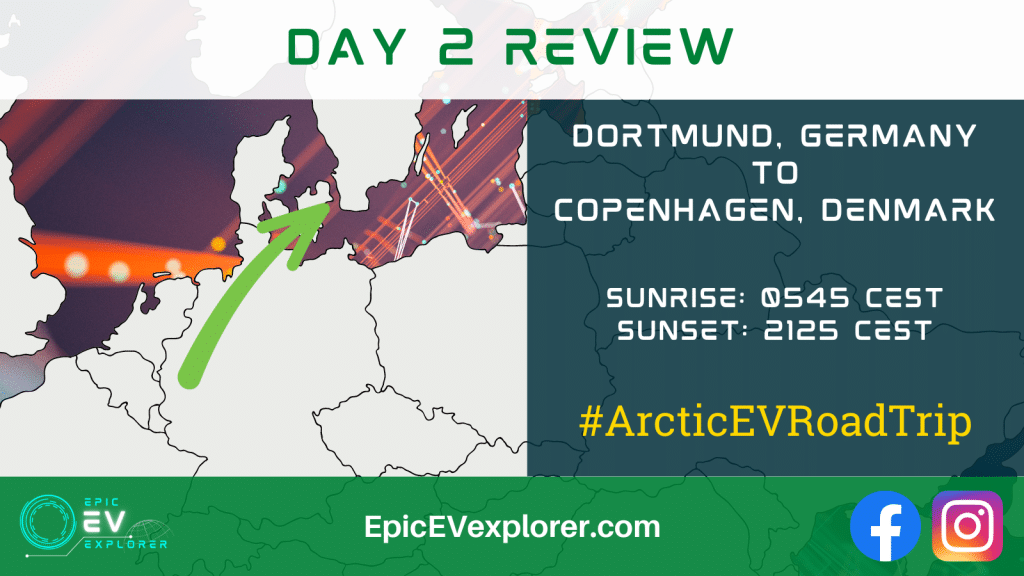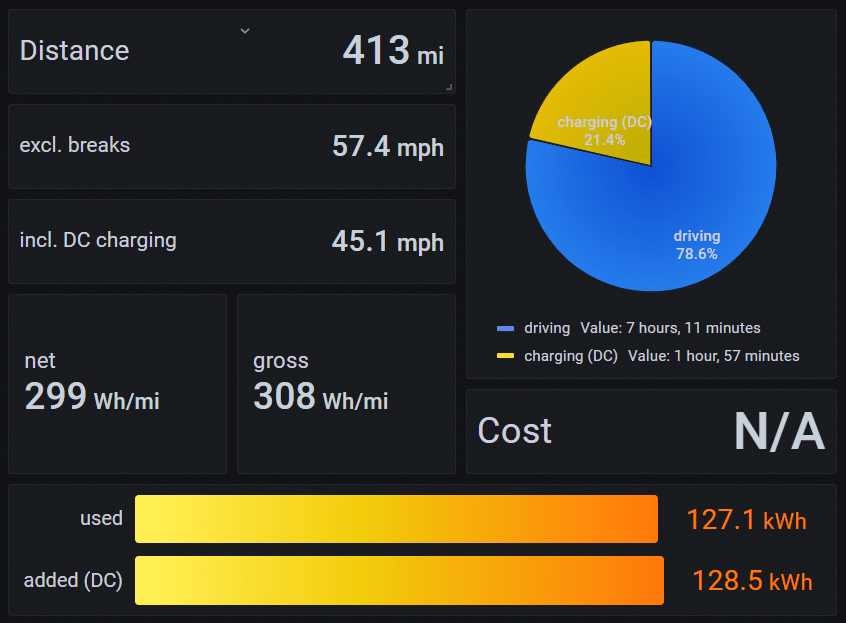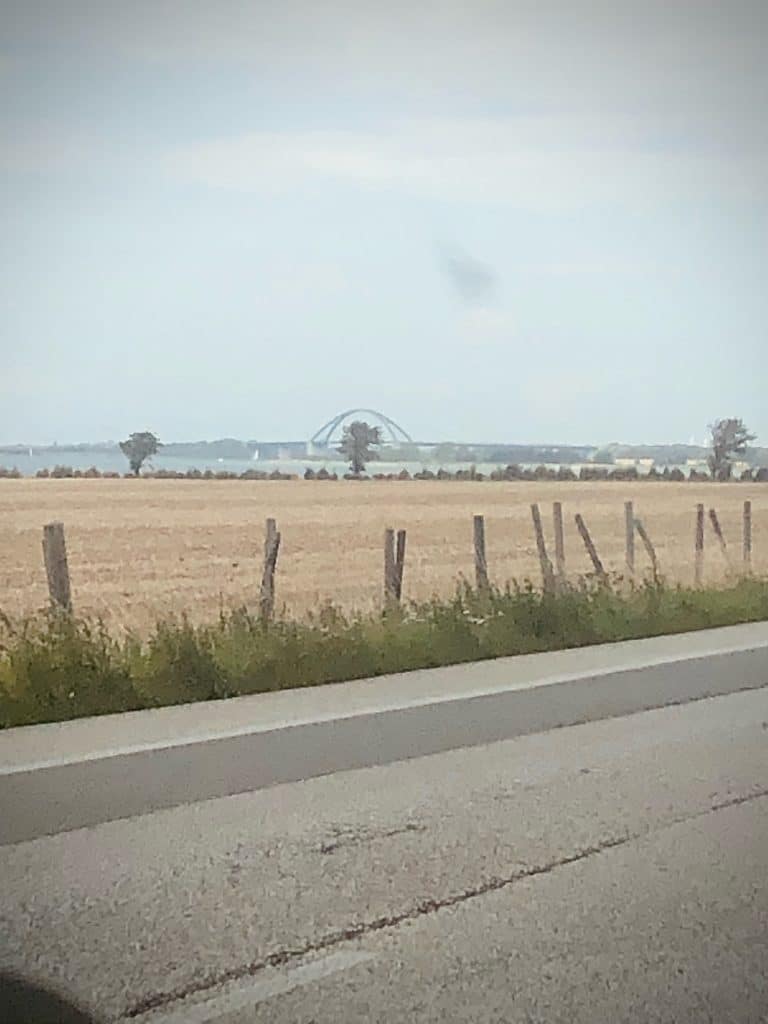
Yesterday, we set off on the second day of our epic journey. From Dortmund, the industrial heart of Germany, we ventured into the picturesque landscapes of Denmark.
Rain proved to feature heavily in the day but it didn’t stop us reaching our planned destination.
Car charge and usage data
The downpours lasted for most of the day, with the battery going through pre-conditioning ahead of charging. Poor traffic on the way to the ferry too meant that there were a few episodes of stop-start and varying speeds across the day.
We had an interesting moment early on in the day’s drive, when the car realised that its original prediction for battery level at its proposed charging stop was very optimistic and told us that we would not have enough juice to get there, first displaying a yellow banner about travelling at a maximum speed of 115 km/h then displaying a warning on a bright red banner that we just wouldn’t get there.
As a result, we did have to stop sooner and there were three charging stops in total for the day: Lohne, Braak and Køge. Total efficiency: 3.3 miles per kWh.

Story of the day
Second day of the road trip. We got up as per usual and opened the curtains to reveal some not very nice weather. Yes: late July and it was pouring down with rain. So we ran to the car with our bags packed and put them away quickly. That didn’t stop a fair amount of water getting in.
The team then got on the road, ready to drive to the next country of our Arctic road trip, which was Denmark. A long day was ahead, so we decided to go to the first place we could find, to grab breakfast. With a hint of irony perhaps, this was the petrol station nearby. There were two freshly made pastries, plus some fruit from the hypermarket in France, all of which was delicious.
As we got back onto the road, we did our usual thing of putting the destination into the satnav and watching it predict charging stops, although we don’t pay too much attention to those. A little while into the drive however, there was something rather unusual that showed up on the screen. There was a message saying we would be on -1 battery SOC (state of charge) when we got to the first charging stop the car itself thought we should go to. And it went down further as the EV recalibrated its predictions. We pulled into a motorway parking area to check it out and get rid of the message. This was an interesting place though, as it had a church as part of it. The church was tent shaped and painted blue. It was strange to find it in a location like this.
Once we got to the first charging stop, we quickly got going and saw one of the technological highlights of the trip. There was an electric autobahn. Essentially this was a road with overhead cables (think train tracks with overhead line equipment) that charged appropriately fitted trucks on the go. It’s such a shame that we weren’t able to use it as well. That would have saved us some time. No pantograph on the Tesla, unfortunately.
After driving along the three mile electric autobahn, we got to the second charging place, which wasn’t too far from the border with Denmark. Well the ferry anyway. We also got lunch at the café there. This consisted of chicken and cheese sandwiches with lettuce and a questionable sauce. It tasted great though, especially on the cheesy bread. We also ate some of our German chocolate, which was their take on Whole Nut. This tasted fantastic as well.
We left this place to get on the road again, and found ourselves… stuck in traffic. There was a large queue for the Fehmarn Sound Bridge as many people wanted to get over to the island from which the ferry to Denmark goes. The bridge, although undergoing heavy maintenance work, was really picturesque and we managed to film a quick video through the car roof (see our Instagram for this and more). After this we got to the ferry port where we were waiting quite some time to board the ship, as we didn’t book in advance because we didn’t know when we would be arriving. But it was a piece of cake to sort that (our Norwegian toll tag was recognised) and when we eventually got underway, the view was stunning and worth the wait.
After just 45 minutes we arrived in Denmark. The big flag strategically positioned next to the unloading ramp was high on the pole and waving about in the wind. We had arrived: not just in Denmark but for the Scandinavian part of this epic road trip.
We drove for around fifty minutes before reaching the next charging stop. It didn’t take too long to charge and then we departed yet again. The really cool thing about this particular Tesla Supercharger area is it was a solar-roofed charging station with LED lights. Very eco-friendly.
Half an hour after this we were at our destination near Copenhagen for some much-earned rest before we move on.

